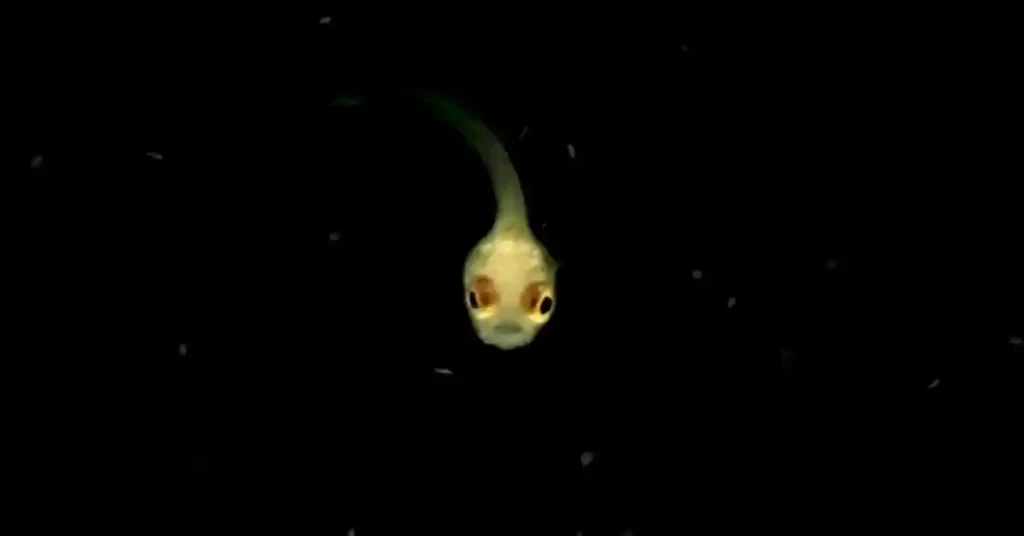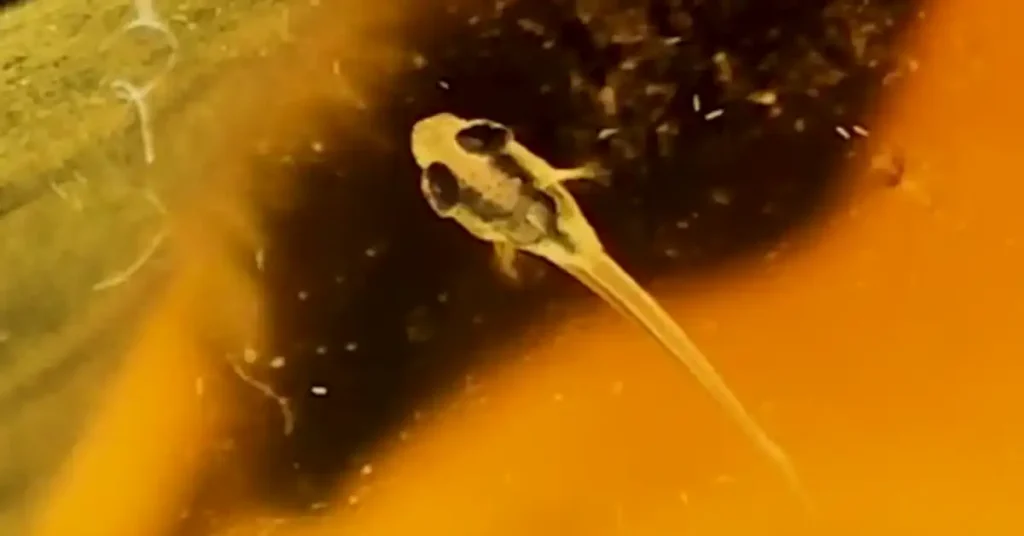If you’ve successfully bred a pair of bettas, well done!
Watching the tiny fry emerge and grow is an exciting and rewarding experience.
However, there comes a point when you’ll need to separate the male betta from the fry.
When Should Male Bettas Be Removed? Answered
In the wild, male bettas typically don’t stay around to care for their fry.
However, when breeding bettas in captivity, it’s a common practice to keep the male with the babies temporarily.
This presence of the male can encourage the fry to start feeding shortly after they become free-swimming, but this arrangement is intended to be brief.
The question then arises: when is the right time to remove the male from the fry?
Most betta breeders opt to separate the male from the fry after 2-3 days. However, some breeders have found success by waiting a bit longer, around 5-7 days, before separating.
Observe natural signs to determine when it’s time to remove the male.
Active swimming and independent foraging by the fry indicate that they no longer require the male’s encouragement to eat.
Also, watch for signs of aggression from the male towards the fry, as this may signal that he sees them as rivals rather than offspring to care for.
Nipping behavior is often a clear indicator that the male should be removed.
Another cue is when the male betta loses interest in the fry and ceases to pay attention to them. This is a natural response as the fry matures.
Also, consider the size of the fry; if they have grown to over a quarter inch, they are likely too big for the male to protect and keep in his mouth.
Use your own judgment based on the male’s behavior and the fry’s development.
Dangers of Leaving the Male with Fry Too Long
As the fry continues to grow, it’s important to be aware of the potential risks of leaving the male betta with them for too long.
The male’s natural aggressive tendencies can surface and pose a threat to the well-being of the fry.
Leaving the male with the fry for an extended period may lead to territorial behavior, where he perceives the older fry as threat. This can result in intimidation, nipping, or even the outright killing of the babies.
Also, the presence of the male can stunt the growth of the fry, even if direct attacks do not occur, as the intimidating environment can induce stress.
Another concern is the potential for combative behavior between the male and the female betta if she is still present in the breeding tank.
This not only endangers both fish but also disrupts the overall breeding environment.
As the fry grow larger, competition for food resources with the male may intensify, putting their survival at risk.
Furthermore, the prolonged cohabitation of so many fish in a confined space can lead to a more rapid deterioration of water quality in the tank.
While having an attentive male betta can be beneficial in the initial stages, it becomes crucial to recognize and address these risks.
Generally, allowing 2-5 days of contact enables the fry to gain strength before removing the male, striking a balance between the advantages of the male’s presence and the potential dangers associated with prolonged exposure.
Signs It’s Time to Take Action

Here are some clear signals that the male betta should be removed from the spawn:
- The male nips or chases after the fry aggressively rather than protecting them.
- You witness the male betta actually consuming some of the fry.
- The fry start hiding from the male or losing their appetite due to stress.
- Fry survival rates start to decline rapidly as the babies grow bigger.
- The male betta fixates on establishing a distinct territory, flaring at the fry when they enter certain areas.
- The male appears disinterested in the fry and stops rounding them up or interacting with them.
Any of these behaviors indicate it’s definitely time to separate the male betta for the well-being and survival of the spawn.
Tips for Safely Removing the Male
When the time comes to separate the male betta from the fry, consider the following tips to ensure a smooth transition.
Opt for the evening for this task, as the male is generally less active and aggressive during this time, making it easier to net and transfer him with minimal stress.
Prior to the separation, ensure that the new tank for the male is fully prepared and ready, facilitating a swift and seamless transfer.
When capturing the male, use two small nets to gently scoop him up together, minimizing chase time in the breeding tank and avoiding excess splashing.
Once the male is in his new environment, make certain that the tank is equipped with plenty of plants and hiding spots. This helps to alleviate relocation stress, providing the male with a comfortable space to adjust to.
If you wish to maintain proximity while preventing direct interaction, consider using a tank divider to block the male from the fry visually.
Periodically check on the male in his new tank, looking for any signs of stress, such as clamped fins.
Following the separation, monitor the fry closely to ensure they continue to eat well and engage in active swimming. This vigilance helps guarantee the ongoing health and safety of the fry.
Caring for Fry After Male Removal
Once the male betta has been removed, you’ll need to take care of the fry’s well-being.
Here are some pointers for this delicate stage:
- Feed the fry small amounts of powdered fry food or newly hatched brine shrimp 4-6 times daily.
- Maintain pristine water quality with frequent testing and partial water changes. The fry cannot handle ammonia or nitrites.
- Avoid aggressive filtering that can suck up the tiny fry. Use sponge filters instead.
- Keep the tank warm between 80-82°F. The fry thrive in very warm water.
- Provide plenty of plant cover and hiding spots for the fry to reduce stress.
- Look for signs of disease, such as fungus or parasites, and treat any issues promptly.
- Cull any deformed or extremely small fry that are unlikely to mature.
With attentive care, most of your fry should survive and grow rapidly after taking the male out of the equation.
The Ideal Growth Environment

Creating an optimal environment for the successful development of betta fry post-separation from the male involves several key considerations:
Firstly, house the fry in a sufficiently spacious rearing tank, typically 10 gallons or more. This ensures adequate space for the fry to grow without the risk of stunting.
Maintaining very clean and warm water within the 80°F range is crucial.
Utilize gentle filtration suitable for the delicate nature of fry to ensure a conducive environment for their growth.
Incorporating abundant live plants, such as java moss, becomes essential as they provide a source of infusoria for newly free-swimming fry.
Also, include hiding spots like aquatic grass and floating plants to offer protection to the vulnerable fry.
Implement a feeding regimen that begins with frequent small feedings of microscopic foods, gradually transitioning to larger foods as the fry mature.
This tailored approach supports their nutritional needs at each stage of development.
To prevent cannibalism and facilitate the growth of more mature fry, consider separating them into additional rearing tanks as they progress in size.
Regularly conduct partial water changes, especially when ammonia or nitrites are detected, to maintain pristine water quality.
This diligence in water management is crucial for the overall health and well-being of the fry.
By addressing these key aspects and providing an environment tailored to the specific needs of the fry, you significantly enhance the likelihood of successful maturation and the development of healthy adult bettas.
When to Introduce the Male Again?
If you have aspirations of breeding your successfully raised male fry in the future, there are some important considerations when reintroducing a mature male into the tank with females ready for spawning.
Here’s a set of guidelines to follow:
Timing is Key: Wait until the females are at least 4-5 months old before reintroducing a male. This ensures they are mature enough for successful breeding.
Choose Wisely: Opt for a gentle male known for quality parenting, if available. Minimize aggression by selecting a male with a reputation for exhibiting mild behavior.
Condition and Feed Well: Begin with conditioned, well-fed fish to discourage aggression and increase interest in spawning activities. Proper nutrition is vital for the health and vitality of the breeding pair.
Create an Ideal Environment: Provide ample tank space, live plants, and hideaways to allow the fish to interact peacefully. A well-structured environment encourages natural behaviors and minimizes stress.
Close Monitoring: Keep a close eye on the behaviors of the males and females during the reintroduction phase. If any signs of overt aggression emerge, act promptly to remove the male to prevent harm to the females.
By adhering to these guidelines and approaching the reintroduction with care and foresight, your home-raised betta fry can evolve into the foundation for your next betta spawn as they reach maturity.
This careful process contributes to the overall success and well-being of your breeding endeavors.
Final Thoughts
Knowing when to remove a male betta fish from the fry is crucial for maximizing the survival and healthy development of the babies.
Pay close attention to the male’s behavior and the fry’s growth, and isolate the male as soon as warning signs appear or the fry is 2-5 days old.
With diligent care and ideal tank conditions, you can raise a thriving batch of young bettas all the way through to adulthood!



Leave a comment